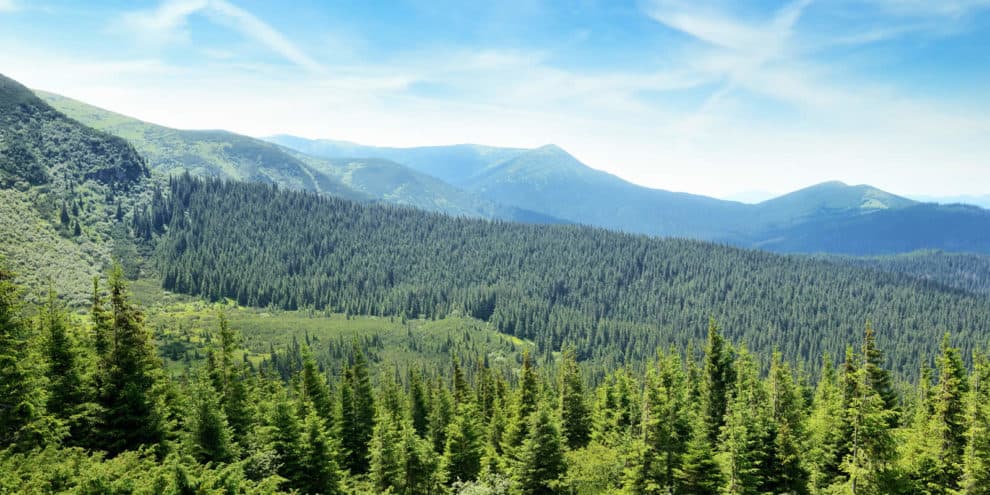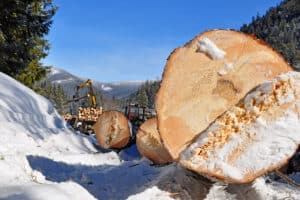The 8th IQPC Timberland Investment World Summit in New York at the end of October was more pessimistic about the mid-term future for forest products and timberland prices than the two predecessors I’ve attended. Rosie Scenario did not show up.
The most optimistic sense of the future came from Remsoft, a software-development company in New Brunswick that works with natural resource industries, particularly timber. Their take on the next 10 years was that things would “revert to the trend,” which is price appreciation in products, broadly speaking.
Peter Barynin, principal timber economist at RISI, the global timber information company, was less optimistic. He described the outlook for forest-product demand as “anemic,” with price gains “difficult.” He suggested that the near-term future might be considered an “unstable recovery,” with something like 2.5 to 3 percent annual U.S. GDP growth on average to 2024.
Within that outlook, he saw housing starts (single-family and multifamily combined) at an average annual 1.7 million compared with an annualized rate in 2010 of about 600,000 (about 450,000 single-family and about 160,000 multi-family starts).
Barynin believes that the U.S. is “emerging as the timber basket to the world.” The very fact of unused milling capacity and excess timber supply in this country should, however, keep timber prices flat for the next couple of years.
He considers the market for U.S. forest products to exist in a “high-risk” environment related to 1) “unprecedented” developments in the U.S. housing cycle, 2) questions about stability in both the U.S. and Europe, 3) currency questions and 4) whether Russia’s vast supply of stumpage will start filling a significant space in global demand.
(Gunnar Balsvik, CEO of Kapan Pensioner, a large Swedish pension manager, said that he would not invest in U.S. timberland because he thought it was “too scary.” This struck me as a common attitude when facing a choice between domestic and foreign investments—“better the devil you know than the devil you don’t.” The unfamiliar always looks scarier than the familiar, and, of course, often is.)
A cold-water perspective came from Joel Shapiro, head of Atlanta-based Timbervest, LLC, which manages about 825,000 acres in the U.S. He said that he saw timberland prices coming down, with “some [bare] dirt values dropping in half over the last few months.” He believes that few harvests are profitable today, and the REIT structure of some timberland managers are “forcing these companies to cut in a bad [market] environment.”
Still, Shapiro described U.S. timberland as “the best place to be” among global timber regions, because it has provided over time “nice returns,” low risk and low volatility. He pointed to “operating problems” in South America as a reason why investors are “not making money” there, and he was somewhat amused at the TIMO interest in South American projects “that won’t make money.”
He suggested that the next big wave of buyers for U.S. timberland during the next 10 years would be European and Scandinavian utilities looking for boiler fuel and integrated oil companies looking for wood-based biofuel capacity. Both uses are driven by government requirements for renewable energy.
Jeff Wikle, principal in TerraSource Valuation, LLC in Waxhaw, N.C. and Blacksburg, Va., gave an insightful presentation on timberland appraisal. He may make this available in pdf to those who request it.
In sum, my sense is that timberland prices have lagged the downward trends in housing starts, stumpage values and product prices. The recent sale to Molpus Woodlands Group of about 125,000 acres for $1,362/acre, down from the $1,700-$1900/acre prices of several years ago for plantation property, may be a bottom, but I don’t think so.
While pulp and chips may show a bit of price appreciation related to new markets for fuel and energy, both softwood and hardwood sawtimber prices (and the land that produces them) is mostly driven by housing starts. I think that a lot of the past’s hoped for and imputed HBU value in timberland is washing out.
I think defensible arguments are at hand to suggest that an average of 1 to 1.3 million (combined single family and multifamily) starts a year over the next 15 years might be a realistic guess. That’s a tangible market, but it’s half of where we where several years ago.
When 2007 timberland bought at $2,500/acre is reset at $1,200-$1,400/acre, the market will move again. I’m not sure timberland sellers will do better tomorrow than they can do today. And if the glut of foreclosed homes keeps growing and depressing starts, they may do even worse.
This content may not be used or reproduced in any manner whatsoever, in part or in whole, without written permission of LANDTHINK. Use of this content without permission is a violation of federal copyright law. The articles, posts, comments, opinions and information provided by LANDTHINK are for informational and research purposes only and DOES NOT substitute or coincide with the advice of an attorney, accountant, real estate broker or any other licensed real estate professional. LANDTHINK strongly advises visitors and readers to seek their own professional guidance and advice related to buying, investing in or selling real estate.










Add Comment